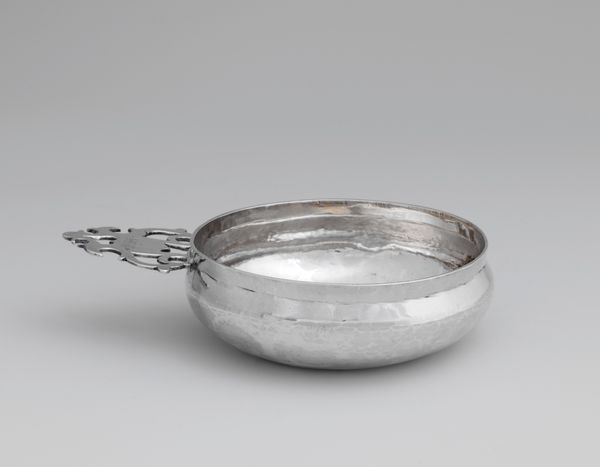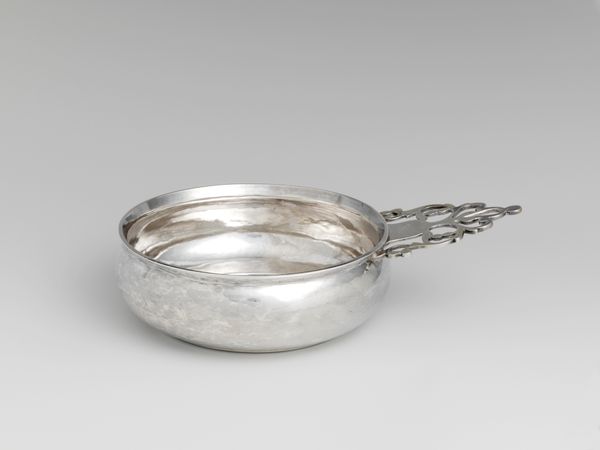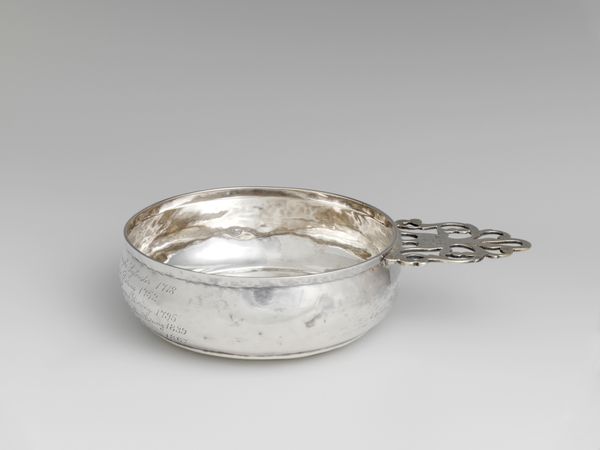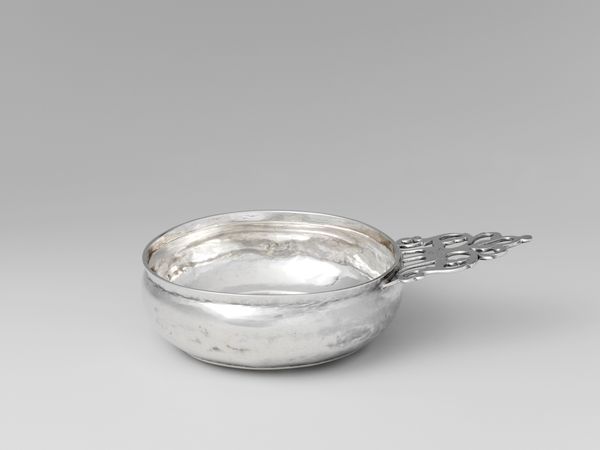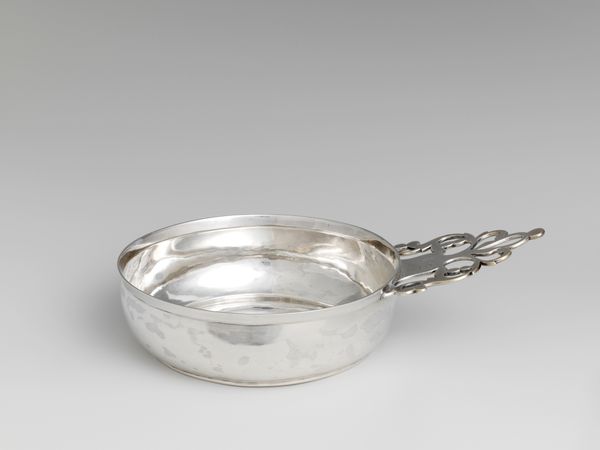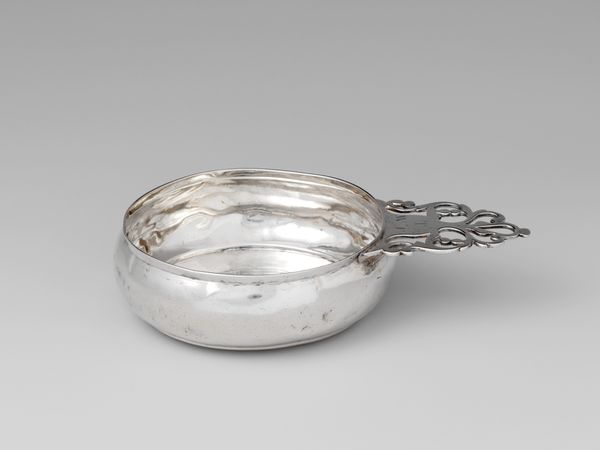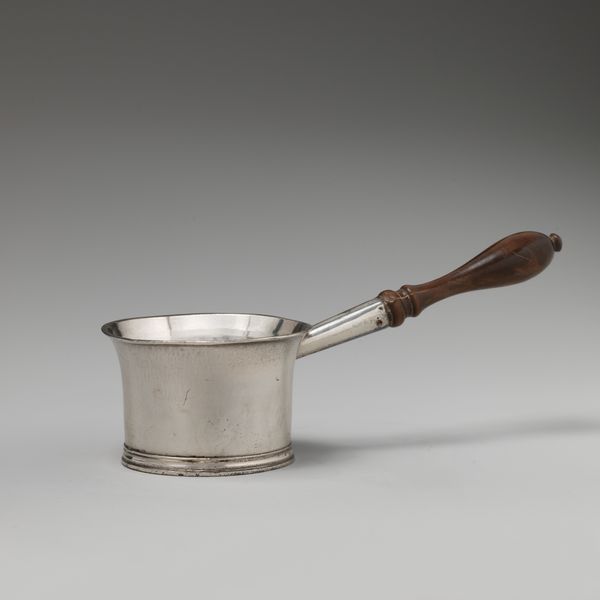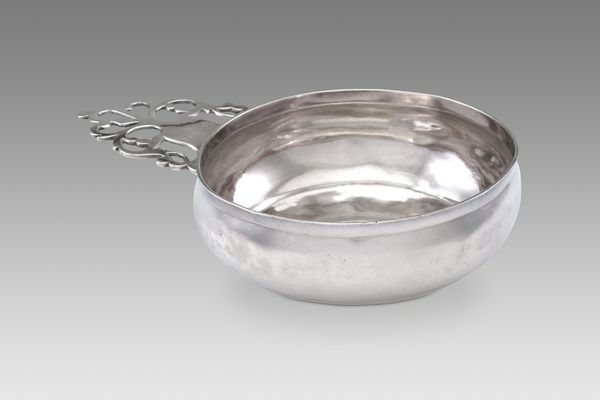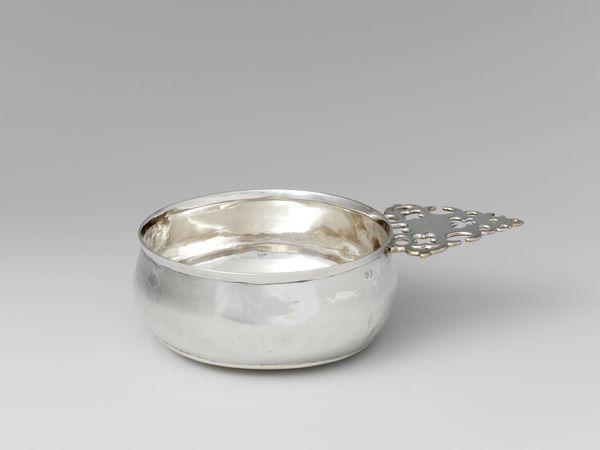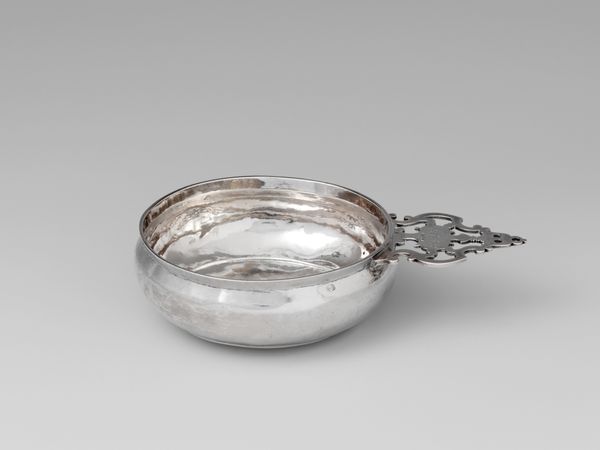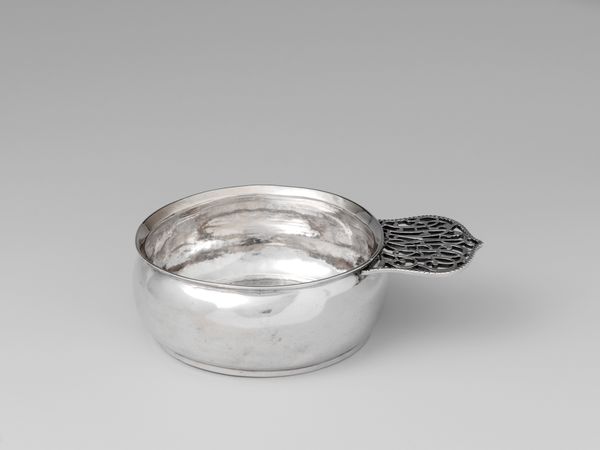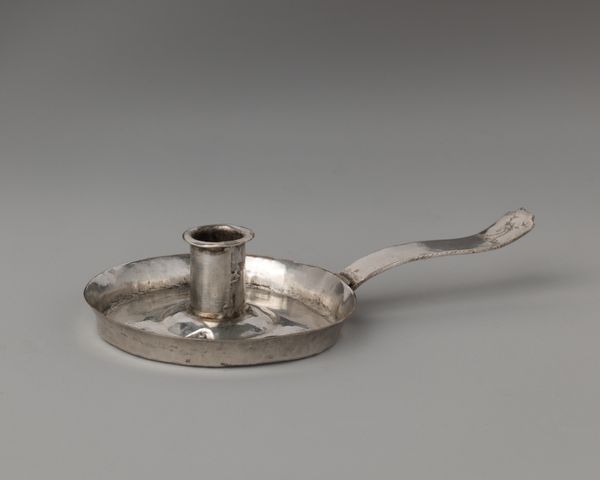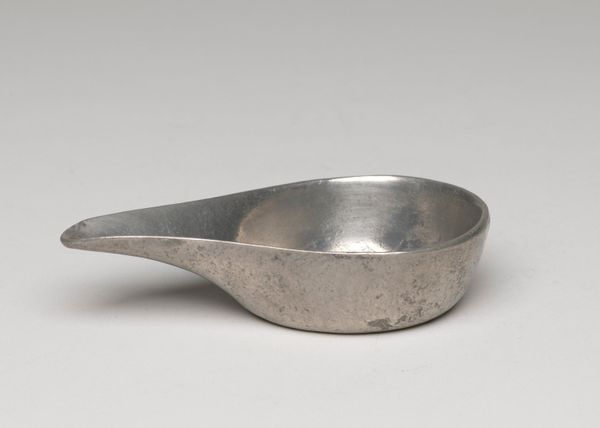
silver, metal
#
silver
#
metal
Dimensions: Overall: 2 1/4 x 7 3/8 in. (5.7 x 18.7 cm); 7 oz. 6 dwt. (227.5 g) Lip: Diam. 5 1/8 in. (13 cm) Body: Diam. 5 1/4 in. (13.3 cm)
Copyright: Public Domain
Editor: Here we have a silver porringer, created by Adrian Bancker between 1730 and 1750. It looks like a simple, elegant bowl, but that ornate handle gives it a bit of character. What stories might it tell about the past? Curator: Exactly! Its very existence speaks to a particular social hierarchy and access to resources. Who would have owned something crafted from silver in the 18th century? Consider the legacy of colonialism, class, and even gender linked to domestic items such as these. What narratives are etched, literally or figuratively, onto its surface? Editor: So, more than just a bowl, it's a symbol of status? Was it common to inscribe them like that inscription there? Curator: Precisely! Think about silver’s connection to wealth accumulated often through exploitative labor. This wasn't just for anyone's nourishment. And, yes, inscriptions like this often marked important life events - births, marriages. How does the porringer challenge or reinforce societal expectations of the time? What about ideas surrounding gender roles, domesticity and the cultural meanings attached to mealtime rituals for elite families? Editor: It’s amazing how one object can open up so many avenues of thought! Considering who might have owned it really reframes how I see it. Curator: It is, isn't it? We have to move past simply seeing the beautiful craftsmanship to considering its complicated socio-economic context. This reframing allows us to question whose histories are typically valorized. Editor: Definitely gives you a lot to chew on…no pun intended! I see it in a completely new way now, appreciating the object but also questioning the narratives of privilege it embodies.
Comments
No comments
Be the first to comment and join the conversation on the ultimate creative platform.
